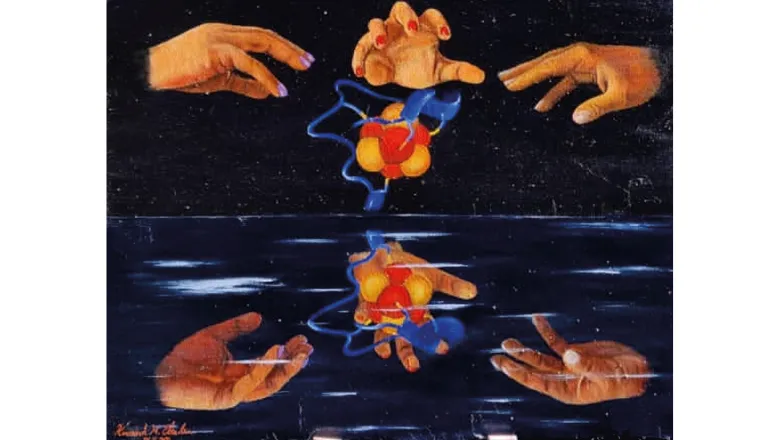This article stimulates future research into the role of [FeS] clusters and proteins in the immune response and viral infection. This fundamental knowledge could help understand the links between viral infection and inflammation and human diseases such as cancer and neurodegeneration.
Dr Kourosh Ebrahimi
15 February 2022
Researchers suggest that [FeS] clusters act as biological fuses in many proteins involved in the immune response
A team of researchers led by Dr Kourosh Ebrahimi from the School of Cancer & Pharmaceutical Sciences, investigate the role of iron-sulphur ([FeS]) clusters and proteins in the immune response to viral infections.

[FeS] clusters are made of different stoichiometries of iron (Fe) and sulphur (S) atoms, e.g. [2Fe-2S], [4Fe-4S], or [3Fe-4S]. The iron atoms in the cluster bind to cysteine (Cys) or cysteine and histidine (His) amino acids in proteins. From the beginning of life on earth [FeS] clusters became a vital component of the cellular machinery. In all organisms including humans, [FeS] clusters are present in many cellular proteins enabling them to carry out essential cellular processes such as respiration, reproduction of DNA, and synthesis of RNA and proteins.
Despite many years of research trying to understand how [FeS] clusters are synthesised and transported inside a cell and how the [FeS]-containing proteins work, very little investigation has been done to try and understand the roles of [FeS] clusters and proteins at the interface of host-virus interaction.
In this research, the team propose a new function of [FeS] clusters in biology by suggesting that they act as biological ‘fuses’ in many proteins that are involved in the immune response. When a virus infects a cell, hydrogen peroxide and nitric oxide are produced due to the innate immune response; these molecules are very reactive. They attack viral proteins and genomic material, blocking the reproduction of the virus – their excess amount can also damage cellular genomic material causing diseases such as cancer and neurodegeneration.
The [FeS] clusters can sense the increasing amount of these molecules and are degraded. The activity of many proteins involved in the immune response is then halted, blocking the excessive synthesis of hydrogen peroxide and nitric oxide. In summary, the [FeS] clusters manage the immune system response, protecting the cell while fighting a virus.
This research opens the door for many unanswered questions. For example, how exactly do the various [FeS] proteins control and modulate the immune system’s response at the cellular and molecular levels? How do viral proteins receive the [FeS] clusters? Further research should aim to answer these questions and reveal new insight into host-virus interaction.
Read the paper published in Nature Chemistry.

